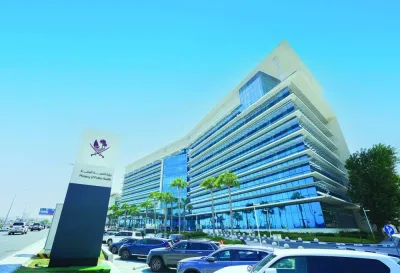The second phase of the National Traffic Safety Strategy (NTSS) will run from 2018-2022 after the current operational plan ends in July 2017, the Ministry of Interior (MoI) has said, giving details of a workshop that was held recently in Doha on the NTSS.
The two-day workshop, held under the patronage of HE the Prime Minister and Minister of Interior Sheikh Abdullah bin Nasser bin Khalifa al-Thani, discussed the role of the public and private sectors in the implementation of the NTSS.
The event was organised by the National Traffic Safety Committee.
The workshop discussed 30 papers pertaining to the NTSS, with different entities involved in the implementation of the strategy making presentations on the progress of action plans as well as monitoring & evaluation (M&E) reports.
The operational plans (2013-2017 and 2018-2022) will help achieve the objectives of the NTSS, which “aims to reduce road fatalities and traffic congestion and develop a sustainable transport system with an effective M&E system in accordance with the timetables to achieve the goals of Qatar in 2022 and 2030”, according to a statement.
“The workshop aimed to implement the National Traffic Safety Strategy goals on time,” Brig Mohamed Abdullah al-Maliki, secretary of the National Traffic Safety Committee, said at the end of the workshop, pointing out that experts and co-ordinators from the authorities concerned offered vital information on the most important requirements and stages of the implementation process. “It encourages us to do more and work to reduce road fatalities and build a sustainable transport system.”
Brig al-Maliki noted that a working group of co-ordinators of all stakeholders involved in the implementation of NTSS was set up and it yielded positive results in co-ordination with the National Traffic Safety Office. These include developing a relationship with the field staff involved in the implementation - thereby gaining access to information on the requirements and constraints, reducing the complexity of the institutional terms of reference, raising the level of understanding among stakeholders on the execution requirements, facilitating the adoption of key performance indicators, promoting optimal use of the country’s potential with periodic reports of achievements, providing information to decision-makers and promoting the national assessment and monitoring system.
He urged the participants of the workshop to convey the recommendations to their institutions in order to expedite the implementation of the relevant operational plan based on the timetable and give the co-ordinators sufficient time to prepare quarterly follow-up reports in co-ordination with the National Traffic Safety Office to provide information to their superiors and the national committee.
Prof Kim Jerio, director at the National Traffic Safety Office, explained that the committee witnessed significant progress in 2015 as it established the office for the monitoring and evaluation of NTSS. The office evaluated the strategy and increased the number of stakeholders from 13 to 30, while a committee was formed for the private sector and the number of safety projects was increased from 198 to 250. A working group of field co-ordinators was also set up in order to accelerate the implementation of the strategy and achieve its goals ahead of time.
The results achieved by the NTSS in the first half (2013-2015) of the current phase has exceeded expectations, with the mortality rate dropping to 8.2 per 100,000 people, which indicates the level of the progress made by the State, the statement notes.

Officials and dignitaries at the event.


